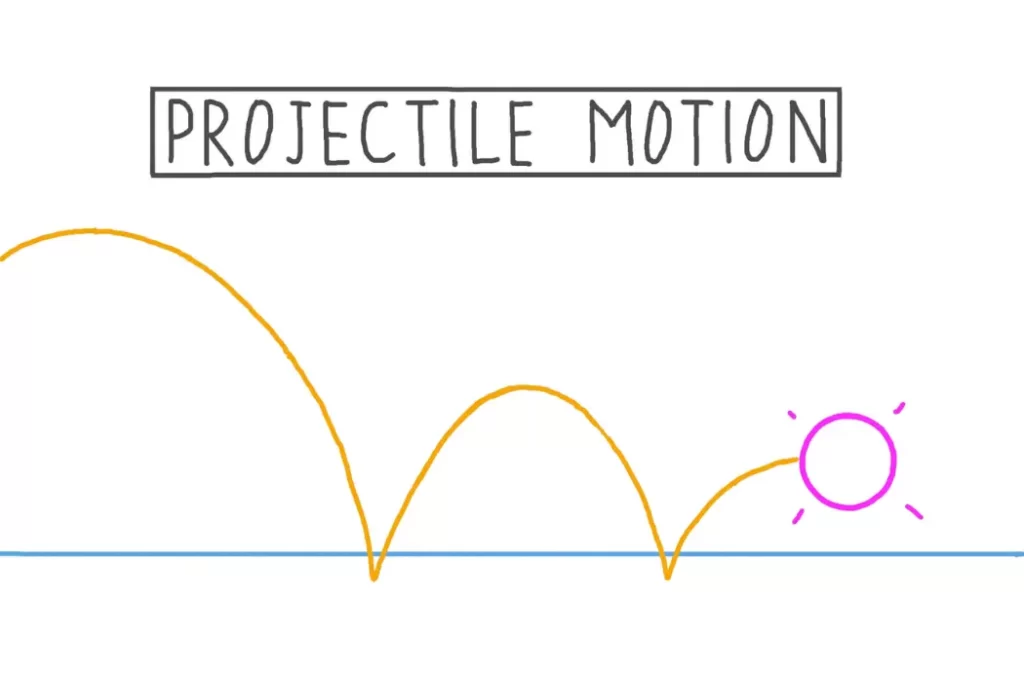Projectile motion is a fundamental concept in physics that describes the motion of an object launched into the air and influenced only by the force of gravity. The trajectory of a projectile depends on several factors, such as initial velocity, launch angle, and air resistance. The angle of projection is a key factor in projectile motion calculations and serves as a vital source of knowledge for understanding the trajectory and behavior of projectiles. In this article, we will explore the significance of the angle of projection in projectile motion calculations, examining its impact on the range, height, and overall behavior of a projectile.
Understanding Projectile Motion
Before delving into the role of the angle of projection, let’s briefly understand the basics of projectile motion. When an object is thrown or projected into the air, two independent motions occur simultaneously: horizontal motion and vertical motion.
The horizontal motion remains constant throughout the trajectory, governed by the object’s initial velocity. On the other hand, vertical motion is influenced by the force of gravity, causing the object to rise to a peak height and then fall back down. The combination of these motions results in a parabolic path known as the projectile’s trajectory.

The Role of Angle of Projection
The angle of projection, often denoted as θ, is the angle at which an object is launched with respect to the horizontal plane. It plays a crucial role in determining various aspects of the projectile’s path.
1. Range of the Projectile
The range of a projectile refers to the horizontal distance covered by the object before it returns to the ground. The angle of projection significantly affects the range. For a fixed initial velocity, the range is maximum when the angle of projection is 45 degrees. At this angle, the horizontal and vertical components of velocity are equal, leading to the longest possible range.
2. Maximum Height Reached
The angle of projection also determines the maximum height the projectile will reach during its flight. When the launch angle is 90 degrees (projectile launched vertically), the initial vertical velocity is at its maximum, resulting in the highest peak height. Conversely, when the angle is 0 degrees (projectile launched horizontally), the object follows a purely horizontal trajectory and does not achieve any vertical height.
3. Optimal Trajectory for Specific Targets
In various real-life scenarios, such as sports or artillery, it is essential to optimize the trajectory of a projectile to hit a specific target. The angle of projection allows us to adjust the trajectory for different distances and heights, ensuring precise targeting.
4. Multiple Angles for the Same Range
Interestingly, for a given initial velocity, there are two angles of projection that result in the same range. For example, an angle of 30 degrees will give the same range as 60 degrees. This concept is known as the complementary angles of projectile motion.

Factors Affecting the Angle of Projection
Several factors influence the choice of the optimal angle of projection in real-life scenarios:
1. Target Distance
The distance to the target plays a vital role in determining the angle of projection. Longer distances may require a higher angle to cover the range effectively.
2. Desired Height of Flight
If a specific height needs to be achieved during the projectile’s flight, the angle of projection can be adjusted accordingly.
3. Air Resistance
In the real world, air resistance affects the motion of a projectile. The presence of air resistance may call for modifications in the angle of projection to achieve the desired range.
Conclusion
The angle of projection is a key factor in projectile motion calculations. It determines the range, height, and trajectory of the projectile, making it crucial for various applications, ranging from sports to military operations. Understanding the impact of the angle of projection allows us to optimize trajectories and achieve precise targeting. Whether it’s a soccer ball, a cannonball, or a spacecraft, the angle of projection plays a vital role in determining the path of the projectile.
FAQs
What is the angle of projection in projectile motion?
The angle of projection in projectile motion is the angle at which an object is launched with respect to the horizontal plane.
How does the angle of projection affect the motion of a projectile?
The angle of projection significantly influences the range, height, and overall trajectory of a projectile.
What is the optimal angle of projection for maximum range?
The optimal angle of projection for maximum range is 45 degrees, as it achieves the best balance between horizontal and vertical velocities.
Can the angle of projection exceed 90 degrees?
No, the angle of projection is always measured between 0 and 90 degrees, representing the launch angle with respect to the horizontal plane.


